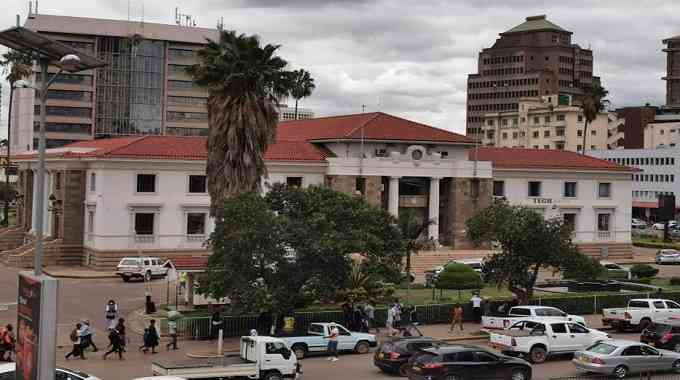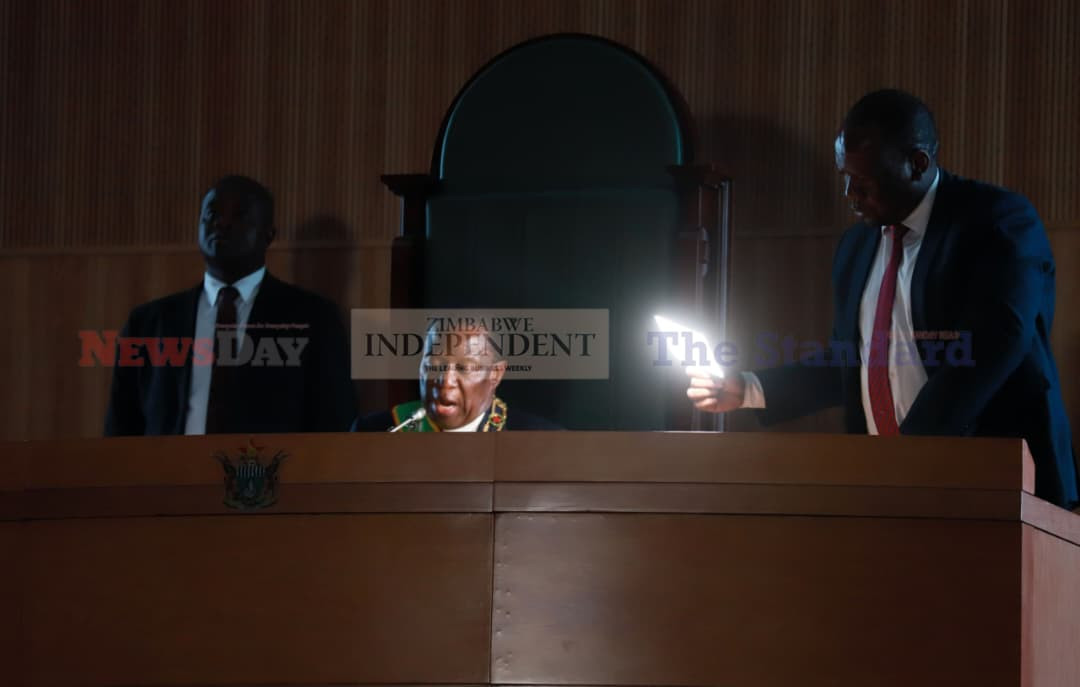
Zimbabwean reinsurers are on the backfoot when trading on international markets due to low international scale financial strength ratings. Rating agencies normally assign financial strength ratings to insurers and reinsurers as an opinion on capacity to pay claims.
Generally, ratings are either on an international scale or national scale. International scale ratings are relative rankings on a global basis and national scale ratings are relative rankings at national level and carry a country suffix using IOSCO country codes – zw for Zimbabwe and zar for South Africa.
International ratings have precedence over national scale ratings as they are pinned to global fundamentals and are front and centre when pitching for international business.
In this respect, it is difficult for a re/insurer in a country with a sovereign rating of CCC to achieve an international rating above CCC. Zimbabwe is in selective default, hence an RD/SD, and it is difficult for a predominately Zimbabwean reinsurer to be rated above a CCC.
Intuitively, the forgoing statement should have capped a Zimbabwean re/insurer at an RD since that is the rating of the sovereign. However, due to rating definitions it is not tenable to classify a non-defaulting re/insurer in a rating range that implies established defaults.
The more plausible position is to place the rating above the administrative levels of ‘CC/C’ but still reflect the vulnerability of the entity to a weak sovereign’s tantrums in a stressed scenario. A ‘CCC’ rating normally applies in that case, since it is the first notch above re/insurers that are expected to default within the next six or 12 months as the definitions may dictate.
On that basis, a highly performing Zimbabwean re/insurer, with the quasi totality of assets located in local financial institutions and capital markets, and predominately generating local premiums is likely to have a CCC/CCC — international scale financial strength rating. In that scenarios it becomes intractable to provide reinsurance capacity on an international or regional market.
In fact, it is out of regulatory forbearance for countries like Botswana, Tanzania, Kenya and Uganda to allow cedants to use such security as they have minimum internationals scale ratings of BBB for international reinsurers and where a Risk Based Supervision overlay is present, cedants will be dissuaded by high counterparty risk capital charges for low rated reinsurers.
- Mavhunga puts DeMbare into Chibuku quarterfinals
- Bulls to charge into Zimbabwe gold stocks
- Ndiraya concerned as goals dry up
- Letters: How solar power is transforming African farms
Keep Reading
For an exposure to a CCC rated reinsurer, more than 40% of the receivables may be written off. The saving grace is the ambiguity in some regulations where national scale ratings are interchanged with international scale ratings.
Being relative rankings within an economy, an average sized re/insurer that is well capitalised and managing earnings competitively can easily achieve a national scale rating of BBB(ZW) and out of this accidental generosity some regulators have allowed re/insurers with less than BBB international scale ratings to provide capacity.
This error is convenient because strict adherence to an international scale financial strength rating will exclude most African reinsurers and open markets to international careers only.
Besides being global rankings, international scale ratings are linked to ranges of default probabilities and express a view on the resilience of an issuer of re/insurance contracts to honour claims under different stress scenarios.
Hypothetically, a AAA re/insurer can be designated to withstand a ‘1 in 200 loss’ and a ‘BBB’ insurer to withstand a ‘1 in 50 years’ loss event.
The levels of resilience decline down the rating scales to ‘CCC’, which is an entity that faces imminent default and a ‘CC to C’ range, which is an entity that is under administrative action or is in the process of winding up and a default is likely within 12 or 6 months but has not been ascertained. ‘RD’ and ‘D’ ratings depict a default situation to part or the whole of creditors or policyholders: Note that it normally takes a lot of time for a default to eventuate for insurers compared to banks because of administrative processes that re/insurers can put in place before a default is called out. Due to Zimbabwe being a sovereign in default, re/insurers with predominately Zimbabwean assets and premiums have to deal with a low sovereign ceiling.
The sovereign ceiling is based on a notion that the creditworthiness of an entity operating within a certain jurisdiction can not be far disposed above its sovereign.
Firstly, this is because the government is theoretically the best credit in any jurisdiction, given access to an expansive economic base through taxes, and second, the government has policy options to impose monetary conditions; cause inflation and currency deflation; and impose foreign exchange controls when under economic pressure.
These policies, which are meant to restore the economic viability of the government, can impair the ability of re/insurers that are well managed or have foreign ownership from honouring their obligations.
The adage, an apple does not fall far away from the tree is germane to this credit ratings concept.
Credit ratings are pinned by fundamentals and there are limited options to pierce the ceiling.
Piercing the sovereign ceiling is the term used to describe a situation where a rated entity is assigned an international scale rating that is above the sovereign rating, and this requires mitigating sovereign risk.
The easiest option is diversifying premiums or assets to higher rated countries. Countries like Botswana (BBB+ rated by S&P), Mauritius (BBB- rated by S&P) and South Africa (BB- rated by S&P) are the closest sovereigns that can provide uplift through asset location strategies and business writing.
A track record of writing significant business (+10%) from these higher rated jurisdictions could be positive to re/insurers’ international scale ratings, albeit with the former two presenting limited market depth and the latter notorious for anti-selection (reinsuring bad risks with less informed external players).
Notably, the higher the proportion of assets and premiums placed in these higher rated jurisdictions the higher the uplift to the CCC band an average re/insurer in Zimbabwe is likely to receive.
In addition to geographical diversification strategies, re/insurers in Zimbabwe can seek credit enhancement from first and second level reinsurers.
Notably, Santam Re’s international scale rating was sheltered from a series of downgrades in South Africa’s sovereign rating through an agreement to write international business on New Reinsurance Company Limited’s (New Re) paper with effect from 1 January 2020.
The Zurich-based reinsurer is a wholly owned subsidiary of Munich Re, with an AA- rating from S&P. Of course, such an arrangement has its own cost and benefits, and these differ for each reinsurer depending on the quality of risks being written on borrowed paper.
That said, many insurance experts question why the credit strength of retrocessionnaires does not automatically transmit to reinsurers and that of reinsurers does not transmit to insurers when the cost of getting highly rated security on the panel is very high.
The answer lies in the fact that an insurer remains liable for claims to the policyholders and first and second layer reinsurers are risk reduction structures, which have direct impact on capital (low underwriting risk) and earnings (low earnings volatility)- both factors which are factored into other rating factors.
However, the ratings of reinsurers usually factors into the counterparty risk model. The higher the quality of the reinsurers or retrocessionnaires the lower the counterpart charge placed on the reinsurer — making reinsurance a hygiene factor to rating agencies.
The two strategies above are realistic but can be costly as there are no upfront silver bullets to a structural issue. As Peter Drucker puts it, “Nothing is less productive than to make more efficient what should not be done at all “. Zimbabwe can work on its sovereign rating and rival South Africa, Mauritius and Botswana for local re/insurers to piggyback a competitive international scale rating into regional and international markets.
With an under-resourced war chest on regional reinsurance markets, ‘CCC’ rated Zimbabwean reinsurers have to face ‘B’ rated domestic reinsurers in East Africa. Additionally, given that issuer ratings (ratings for debt capital issuances) are usually one notch below financial strength ratings, following the pecking order of honouring policyholders before debt holders, it will also be more expensive for Zimbabwean reinsurers to raise capital internationally and diversify assets into higher rated jurisdictions.
- Chingono has experience in credit analysis focusing on insurance companies, banks and corporates. He is currently a credit analyst based in Australia and founder of ratings advisory business, Quad P Investor Services. — [email protected].











